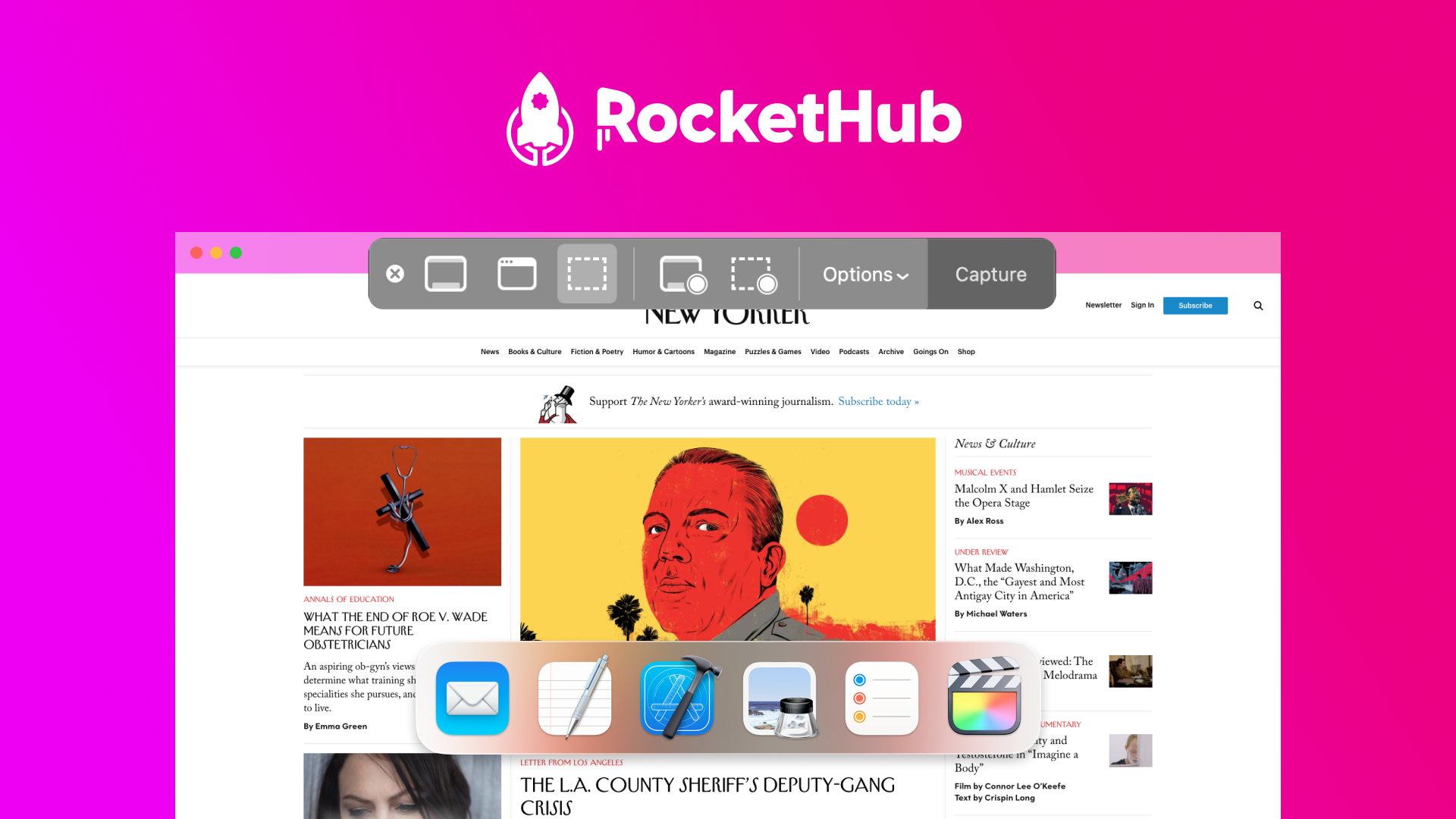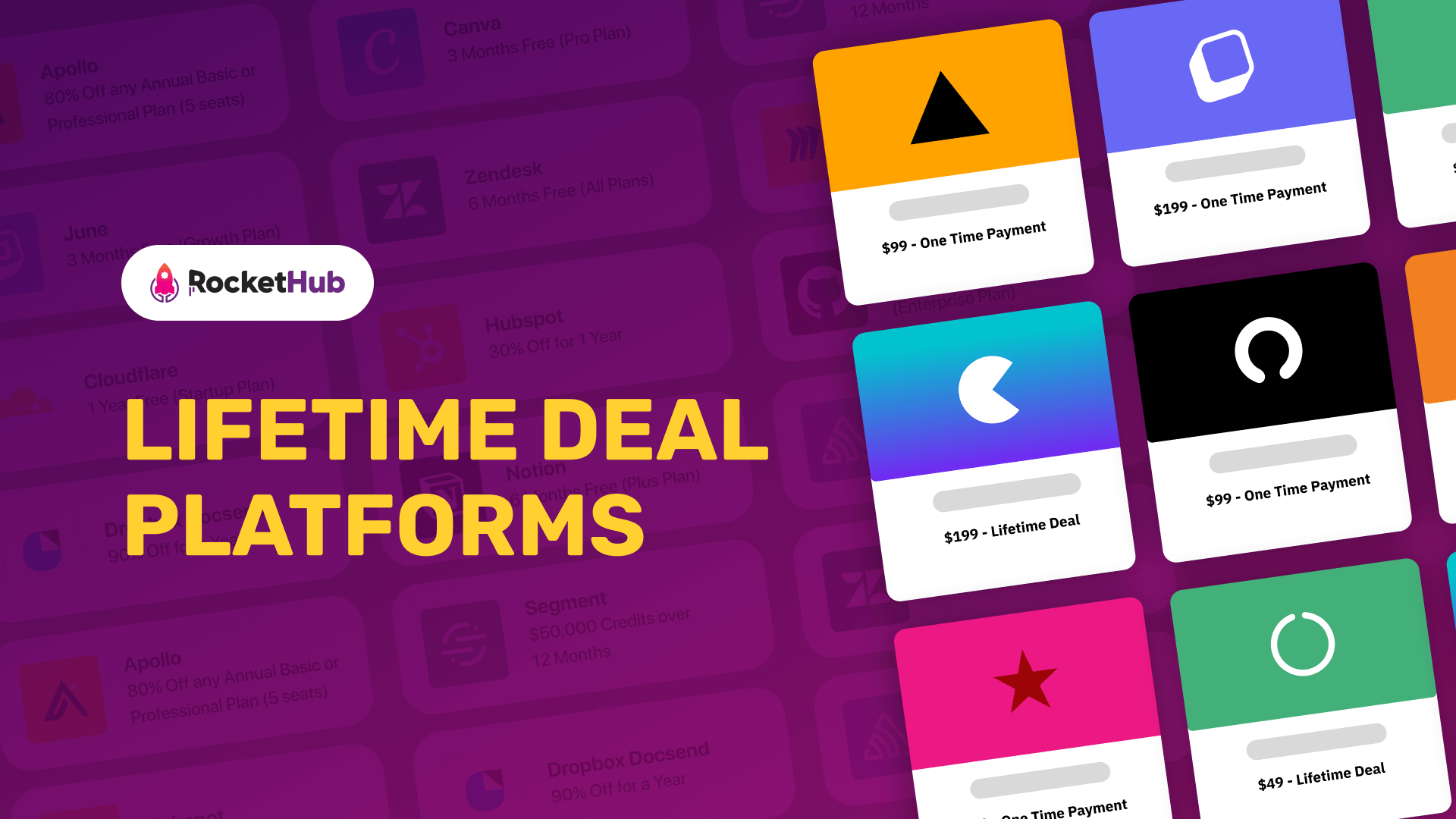
7 Reasons Why Every SaaS Team Needs Interactive Demos
- Karan Parwani
- October 27, 2023
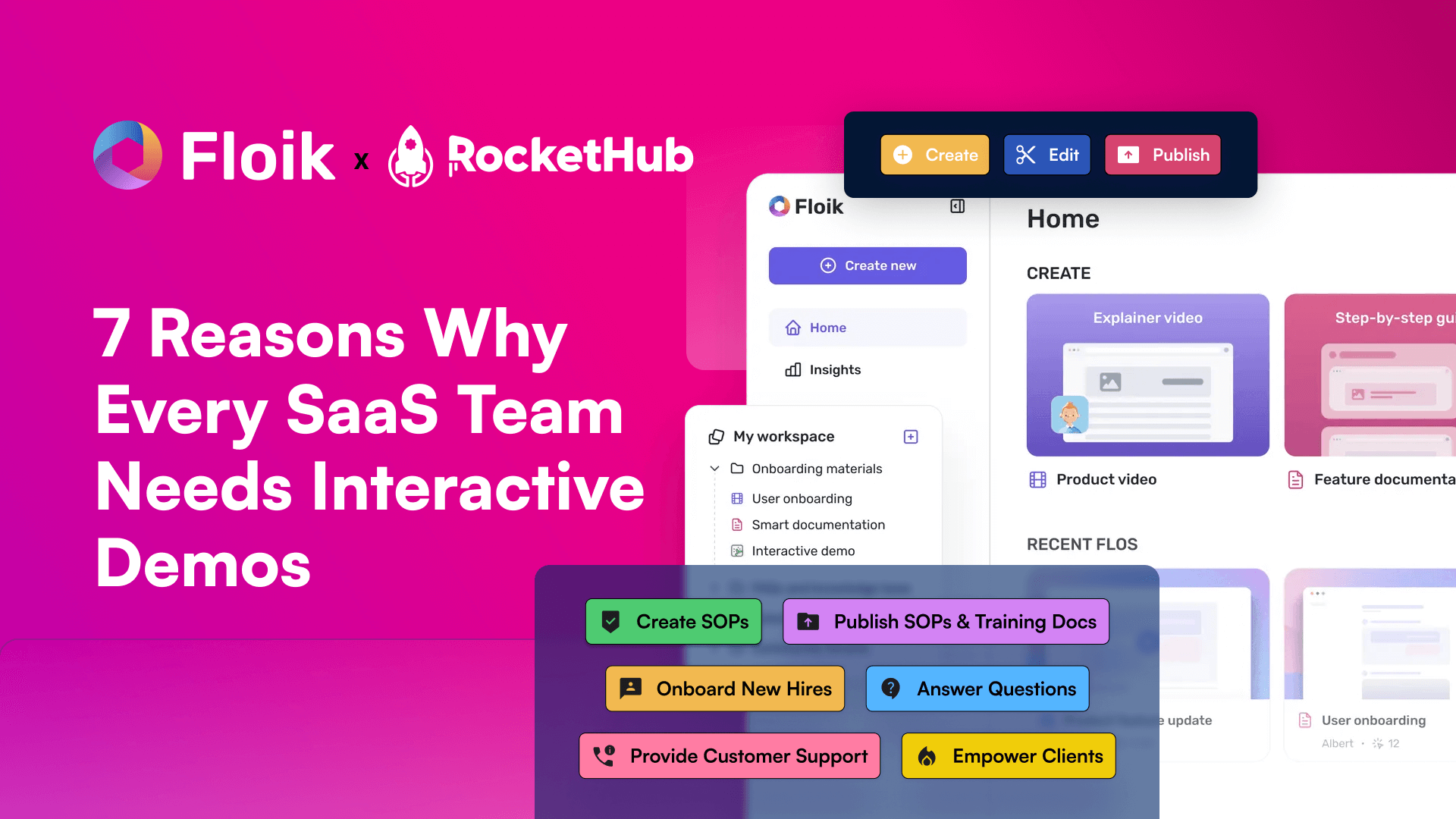
Making a Case for Interactive Demos: 7 Reasons Why Every SaaS Team Needs Them
Let me paint a scenario for you.
You want to buy a new laptop, and you’re stuck between two great options. So, you go to both stores to test each device yourself.
Brand A lets you explore the product with a detailed rundown of its top features. But Brand B doesn’t have much to offer besides a long and unconvincing list of features.
Which product would you feel more confident buying?
If you chose Brand A, you’ve just experienced the impact of interactive demos. In the competitive world of SaaS, interactive product demos give buyers the chance to click around and experience your product firsthand.
But if you’re still on the fence about creating interactive demos, we’ll give you seven convincing reasons to jump the fence and build your demo library.
What are interactive product demos?
Interactive demos, also known as self-service product demos, are clickable walkthroughs where viewers can go through the workflow by clicking on different hotspots and explore your product on their own. These demos invite users to actively engage with the product, without signing in and read/listen/engage with each hotspot instead of passively watching a video or reading a block of text.
Since these demos replicate your actual product interface, users get a glimpse of how your tool looks and works—without signing up or sharing their data. These demos are also available on demand. So, potential buyers don’t need to wait to connect with a sales rep to see your product in action.
Here’s an interactive demo example. Click on different buttons to see Floik’s key capabilities:
7 reasons why interactive demos are a smart investment
Creating interactive demos can be a commitment. You have to develop an engaging story to design, distribute, and analyze these product showcases. So, if you’re not sure whether this marketing asset is worth the investment, these seven benefits will change your mind.
- Let buyers research independently and remove friction
- Build a pipeline of targeted, product-qualified leads
- Ungate your product to accelerate the sales cycle
- Offer support for customer enablement and product adoption
- Bridge the gap between perceived and actual product value
- Create product-led content to encourage product discovery
- Let users choose their own adventure with personalized demos
1. Let buyers research independently and remove friction
Gone are the days when sales deals happened in closed rooms. Today, B2B buyers want to buy software on their own terms. With research concluding that 75% of B2B buyers prefer a rep-free sales experience, it’s clear that they want more control in the buying process.
What does that mean for SaaS companies? No more gated products, hidden pricing, and lengthy sales calls. Here’s the kicker: Alon Even, a B2B growth expert, indicates in his research that a majority of buyers feel SaaS companies aren’t doing enough for buyer enablement.

If you want to pivot to the new and improved buyer experience and truly enable your buyers, you need:
- A library of interactive product demos
- Transparent pricing page and case studies
- Carefully tested and seamless user experience
- An optimized website with laser-focused messaging
An interactive demo creates a sandbox experience for prospects to see your product’s core capabilities without the hassle of setting up a new account.
This self-guided experience also allows them to explore your product at their convenience, share it internally, and build consensus before talking to your sales team. The result? No friction, faster decision-making, internal champions, and shorter sales cycles.
2. Build a pipeline of targeted, product-qualified leads
The traditional sales approach isn’t optimized for granular lead filtering. So, sales reps end up pursuing bad leads for a long while before facing the cold truth.
Interactive product demos can help you eliminate this inefficient process.
You can embed a lead capture form within each demo and analyze individual viewer activity to segregate high-intent leads from low-intent ones. It’s a form of self-qualification where genuinely interested leads will complete the demo and take further action if your product aligns with their requirements.
For example, if a prospect engages with an entire demo and signs up for the free trial, they’re a high-intent, hot lead. If somebody leaves after 2-3 clicks, they’re likely not interested or the product doesn’t meet their current needs.
In both cases, having this information come in automatically is extremely useful and time-saving for your sales team.
Real-time engagement metrics can tell you the time they spent on each demo and their overall completion rates. This data offers solid criteria for lead scoring and prioritization, making your sales workflows more efficient and effective.
Besides capturing product-qualified leads, another huge benefit of interactive SaaS demos is the ability to stay top-of-mind for your target buyers. Jason Bradwell, a B2B marketing and growth consultant, emphasizes how most buyers aren’t in a position to buy. So, the best thing you can do to convert them in the future is build brand recall. And that’s exactly what these demos can achieve.

You can distribute interactive demos at multiple touchpoints in the buyer’s journey—from social media and emails to your feature pages and pricing pages. It’s a great opportunity to deliver value and give them something to remember your brand.
3. Ungate your product to accelerate the sales cycle
An interactive product demo delivers instant gratification to potential buyers. They don’t have to go through a lengthy sign-up and onboarding process to access a free account. Neither do they have to wait for a live demo call. There’s no barrier to entry.
It’s just a matter of a few clicks, and they can understand your product’s main features.
If your product meets prospects’ expectations, this un-gated demo can be more convincing than a sales pitch. You can move leads further down the sales funnel and close deals faster. More importantly, it establishes a product fit for buyers. They can explore and test whether your solution can fulfill their needs and fit into existing systems. With that, these demos save time for both parties and lead to an informed decision. Andrew Hatfield, founder of a SaaS growth agency, explains this benefit in more detail:

On top of accelerating product discovery and your sales cycle, un-gated interactive demos are also crucial to building sales and marketing alignment.
Both teams can use this customer data to see what resonates the most with your buyers and what makes them tick. They can modify different touchpoints and create a more refined buyer journey based on a collaborative approach—like this example by Brendan Hufford.

4. Offer support to customer enablement and product adoption
69% of customers want to resolve as many issues as possible independently with the help of customer self-service options. That’s another reason why you need interactive demos—to empower existing customers and establish a healthy relationship with hands-on support.
Instead of asking users to skim through big blocks of text in your help center articles, show them exactly how to solve an issue with clickable demos.
You can embed these demos within your app as tooltips or add them to your knowledge base. With an all-in-one tool like Floik, you can even convert your interactive demos into explainer videos and how-to guides in a single click. Put simply, Floik empowers you to cater to all types of users in a versatile self-serve setup.
These demos can improve users’ familiarity with your SaaS and reduce time-to-value, eventually driving deeper and faster product adoption.
5. Bridge the gap between perceived and actual product value
So many promising deals never materialize because of gaps in your product’s perceived and actual value. Overselling features can create a sense of mistrust among users when they try your solution, and it doesn’t fulfill their use cases.
You can avoid this problem by giving users an insider’s look at your product with interactive demos. They can visualize the actual product value and decide whether they want to invest more time.
These demos also eliminate misconceptions about your tool’s capabilities. Once users see what you have to offer, they can ask clarifying questions to move ahead in the buying process. This is a great opportunity to create custom demos based on real-life scenarios. You can mimic a user’s pain points and show how your product can address these challenges.
Letting potential customers interact freely with your product can help you win their trust and avoid any miscommunication about product features.
6. Create product-led content to encourage product discovery
Product-led content (PLC) can maximize your reach and organic discovery. But for PLC to truly work its magic, you can’t simply go on and on about your software and call it a day.
Effective product-led content should also help readers tackle specific problems and understand how your solution works—as Masooma Memon, a B2B SaaS writer, puts it here.

You can embed interactive demos within your articles, social posts, emails, and lead magnets to create more experiential content. This is often more compelling and impactful than video or textual content. Plus, you can run multi-channel marketing campaigns to cover more ground.
When presented in the context of real-world use cases, these interactive demos can help readers visualize exactly how your product can help them. It contextualizes your tool’s features rather than just listing them in a text-heavy article.
7. Let users choose their own adventure with personalised demos
No two buyers are the same. Each buyer has their own set of challenges and motivations to use your software. You can clearly address these aspects in customized demos to strike a chord with each buyer persona.
With branched demos created using Floik, you can integrate multiple persona-specific demos into a single presentation. So, end-users are free to choose their own adventure and explore your product from a different set of shoes in each one.
The primary benefit of such customized demos is speaking directly to a specific buyer persona and making them feel that the product is purpose-built for them.
These demos can also reduce cognitive load by enabling prospects to focus only on the features that matter the most to them. At the same time, your sales team can qualify and segment leads based on which demo a prospect completed.
Over to you: Start creating multi-purpose interactive demos
Whether you’re entering a crowded market or looking to strengthen your market position, the key to your success is firmly put in buyers’ pockets. And the only way to get this key is to give them a frictionless and delightful buying experience.
Drawing on these seven reasons, we believe this experience starts with an interactive demo. So, what are you waiting for? Get chopping and create your demo library for wow-ing prospects and customers alike.
Share This Post
Karan Parwani
Table of Contents
Get The Latest Updates
Subscribe To Our Weekly Newsletter
Sign up below to be one of the first crew members onboard and get early access to amazing deals.
Recent Posts


Social Media
Categories
Related Posts
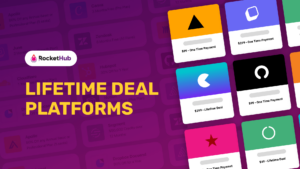
Lifetime Deal Platforms
The best lifetime deal platforms for software. Platforms lik RocketHub scour the web for the highest quality products to bring buyers the best lifetime deals on their platform.

How to Work for Yourself + 13 Solo Business Ideas
Do you ever wonder if being your own boss could truly set you free? In this article, we’ll explore the theory that unleashing entrepreneurial freedom
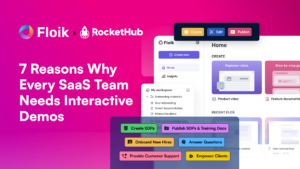
7 Reasons Why Every SaaS Team Needs Interactive Demos
Making a Case for Interactive Demos: 7 Reasons Why Every SaaS Team Needs Them Let me paint a scenario for you. You want to buy

